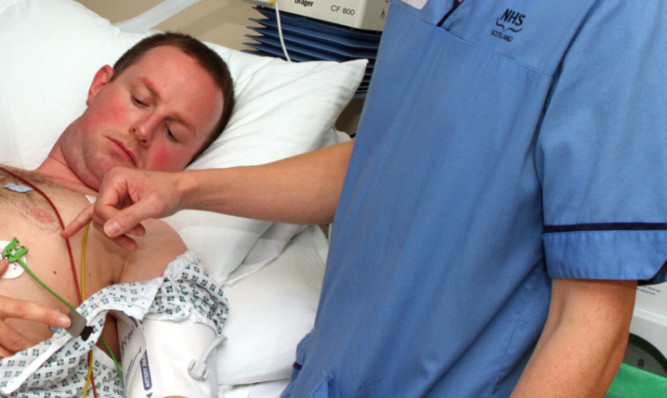People with heart failure are being let down by NHS boards, according to a new report.
The review produced by the Scottish Heart Failure Nurse Forum (SHFNF) has claimed that the number of specialist nursing services is on the decline despite more people living with the debilitating condition.
The report states that the majority of NHS boards are failing to provide enough nurses and the number of specialist heart failure nurses has dropped by 7% in four years.
The report claims 10 of the NHS boards are failing to meet the minimum ratio of heart failure nurses per head of population laid down in the national guidelines, and the number of nurses across the country falls short by 10% of the minimum recommendations.
The minimum recommendation is one nurse to 100,000 population, as laid down by SIGN in 2007.
Suzanne Bell, chairwoman of the SHFNF, said: “Heart failure is a life-limiting condition and people can live with disabling and isolating symptoms for many years.
“While fewer people are dying from cardiac conditions, more people are living with heart failure in fact, almost 94,000 in Scotland.
“Specialist heart failure nurses have the skills, training and expertise to manage the complexities of this condition, in a highly cost-effective way. Despite this, NHS boards are failing to make enough provision.”
The review shows that in NHS Tayside, while the number of specialist nurses has remained at three, the ratio of nurses to population has changed from one to 130,546 in 2008 to one to 134,214 in 2012.
An NHS Tayside spokesperson said: “The NHS Tayside service was developed in 2004 with three WTE nurses and, unlike other boards, we have funded this as a core service. All three nurses remain in post.
“The focus of the local service is to target needs for those heart failure patients who have been admitted to hospital or continue to have unstable symptoms.”
In NHS Grampian, the ratio of nurses to population has improved from one specialist nurse to 264,944 in 2008 to one nurse to 207,781 in 2012.
However, that is still more than double the minimum recommendation.
In NHS Forth Valley, the ratio rose from 1:89,392 in 2008 to 1:97,795 and in NHS Fife it rose from 1:179,429 in 2008 to 1:182,473 in 2012.
Dr Brian Montgomery, NHS Fife medical director, said: “At present, there are two WTE heart failure specialist nurses working within Fife.
“In addition, the Vascular Nurse Services in each of the community health partnerships can provide support for people with less complex needs.”
